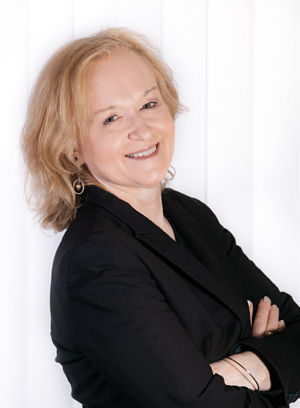
Sunday April 19, 2020 ~ LANGFORD, BC
ANALYSIS by Mary Brooke, B.Sc., Editor ~ Island Social Trends [formerly West Shore Voice News]
As the COVID-19 official pandemic period has with us now beyond five weeks, the overall scope of viral spread has seen the epicenter start and fall in China, spread through regions of Asia and Europe, and then finally arrive in North America where we are actively dealing with it now.

Thanks to the World Health Organization (WHO) playing a delicate science-political dance with China — especially prior to finally declaring the pandemic officially on March 11, but also afterward — time was bought for those who were paying attention in North America. There was time to plan and prepare, both for individuals as well as governments and their public health departments.
In North America we had the advantage of having some time (though pressured) to observe, plan and prepare for the arrival of the novel coronavirus now called COVID-19, which was in fact already arriving slowly by way of travelers returning from outside Canada. BC saw it’s first case in January 2020 (the ’19’ part in the COVID-19 moniker is because it first appeared in known science in 2019 — in December 2019 to be more precise).
Political leadership and public health strategy:
While political leadership in the USA has appeared to think it could muscle its way through the early portion of the pandemic without methodical preparation (the White House initially muted out the voices of public health professionals), most provinces in Canada got down to strategic planning and various levels of on-the-ground preparation that has been coordinated seemingly eagerly and gratefully between governments and the public health and science professionals in their jurisdictions.
There have been many references to ‘what we learned from SARS or H1N1’ in the public chatter that rolled out from governments, relying on public health for the right lingo in the earliest days. It wasn’t long before ‘flattening the curve’ became a household mantra.
Many of the public health initiatives that we see in place and in play right now (e.g. social distancing that was quickly renamed physical distancing, and self-isolation which really means hunkering down at home with whoever you happen to be living with) are a result of pubic health specialists determining how to keep a virus from jumping between humans as its hosts.

As populations start itching for normal movement in society again (something which of course never really was abated, just put on temporary hold), it will be the politicians who will have the final say on that.
Politicians will hold on as long as they can to the science from public health that they know is right, but people are not points on an epidemiology chart; politicians know there will soon come a time when a mix of common sense from both the science world and the sociopolitical realm will have to be put into some sort of combination play. The current tango will come to a natural pause.
Still listening hard to the public health professionals:
Already we hear BC Provincial Health Officer Dr Bonnie Henry saying there could be some loosening of restrictions in this province as early as mid-May — and that it will look different amongst various sectors and communities. She also says a vaccine is at least a year away.
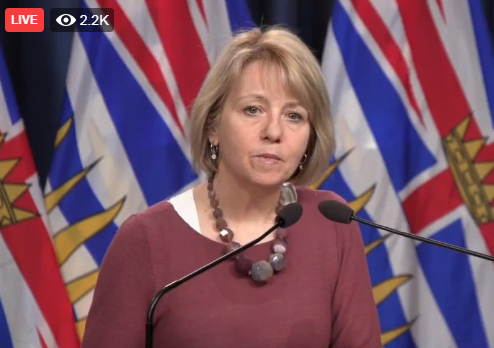
So in that in-between phase there will certainly be infections, Dr Henry openly admits. Whether the expected second wave is gentle or fierce is yet to be seen, as it will largely depend on people’s overall willingness to take the ultimate risk.
What Health Minister Adrian Dix and Dr Henry seem confident of now is that the hospital support system for dealing with any uptick in COVID-19 infections requiring acute care is in place. They are willing to re-ignite the activity of scheduled or elective surgeries, slowly and carefully. In BC we can be grateful for such attention to the good function of the health care system.
How individuals and societal sectors are responding to this crisis:
Despite the uncomfortable, disruptive and clearly damaging aspects of self-isolation and social distancing that have affected people personally, socially, emotionally, psychologically, financially and economically, it’s likely in BC that we will see this relatively well-educated and responsive population withhold from full-force reactivation in an unvaccinated population.
In other words, even when the barn door is opened, not all of the horses will bolt out into the still-unvaccinated unknown. That will be a positive sign that the self-preservation instinct and common sense are in play.
Already we’re hearing about measures such as modulated classroom environments in schools (e.g. some students in-class in school buildings while others are addressing school assignments at home), and some non-essential businesses re-opening if they can maintain the necessary social distancing measures.
Even so, it will be interesting to see how much allegiance will be paid to these part-way measures. Will all parents go along with ‘who goes back to class and who doesn’t’? Will people go back to shop at brick-and-mortar retail stores in order to help keep the economy going, or will caution with possible exposure to the unseen COVID-19 virus serve to restrict that?
In Canada, it appears that the spheres of government and public health have had a healthy respect for each other’s realms, as seen in politicians almost with relief relying upon public health professionals to guide them on most actions. Political leaders are not just listening to advice, they’re taking the advice wholesale — swallowing the entire pill. There is already the slimmest of visible evidence that once politicians figure out what they want to do with this, that they are formulating what to do next even while the virus still has control (i.e. until there is a reliable and widely-distributed vaccine).
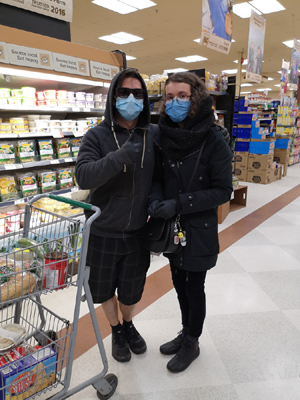
Until there is a vaccine– and not until that vaccine has been widely applied with the population — will politicians ease up on how they’ve handed over the reins to public health. This is not a matter of weeks or months, but possibly almost two years from start to finish. We’re aiming to the end of 2021 for the earliest possible time (i.e. with a vaccine widely applied in the population) where the general population can feel some relief from the present and very real danger of being outside one’s home.
We are self-contained and self-quarantined. No matter that public health officials have asked us to do this … the self-preservation instinct (injected with a bit of public health intel) will contain people from moving about as we did pre-COVID-19.
The current step-back by political leaders from the full strength of their pulpits (i.e. in sharing their power with the health care sector that does not exercise itself in the public eye) is unprecedented in modern politics. The only reasonable comparison is possibly in World War II when governments would have taken direction from their military generals — but even so, the step-aside by politicians was not as pronounced.
The flavor of BC leadership during COVID-19:
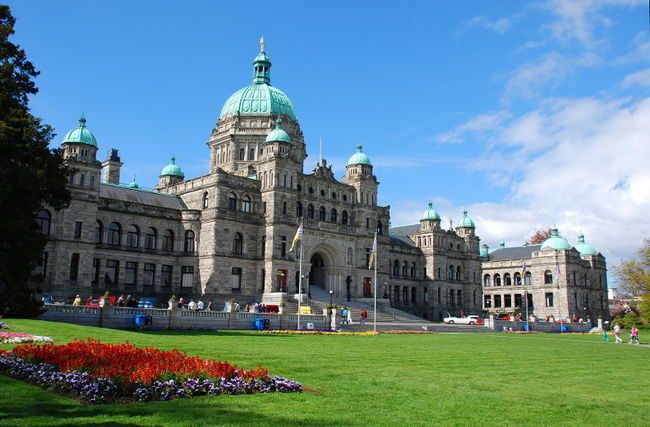
We can be quite thankful that in BC and in Canada that we generally trust our governments and our leaders to have our best interests at heart. By that we have probably saved many of our selves and loved ones from illnesses. That’s because we trusted what we heard (about the science and the public health measures, through the politicians) and acted accordingly. This is a testament not only to the public education system in BC and Canada, but also to the socio-democratic process of governance in Canada. We can note, in particular, how when the chips are down in a life-threatening crisis that even the Official Opposition parties and any other political challengers or opponents have for the most part now set to rest any disruptive thrusts.
You can see the differential in flavours between politicians and public health officials. When in front of the camera the politically seasoned leaders are comfortable, fluent, and deliver usable sound bites and quotable quotes; media are ready on the uptake. In most cases, the public health officials are still finding their footing at the televised podium and media have been adapting to a different style of delivery.

Some public health officials are getting a bit of COVID-celebrity status if only by the sheer frequency of their appearances to deliver otherwise dry and dire but necessary messaging.
Dr Henry even now has a pair of shoes that are stamped with her motto: “Be kind, be calm, be safe”. Those who find themselves with ‘fan clubs’ on Twitter are benefiting themselves in the short term, but also are benefiting the politically-inclined in the long term, who will run with what they’ve built for their own ends.
All in all, BC has lucked out for faring the best in Canada, it appears, for a flattened epidemiological curve (though just in the last few days that reputation is being challenged and shared by Alberta’s public health domain). That’s how things aligned for BC … an ultra-dedicated medical doctor who loves the detail of all things viral and infectious combined with a premier who — after a slight moment of adjustment — sees this journey to the faraway shore of a re-vaccinated society as an opportunity to justly guide his people.
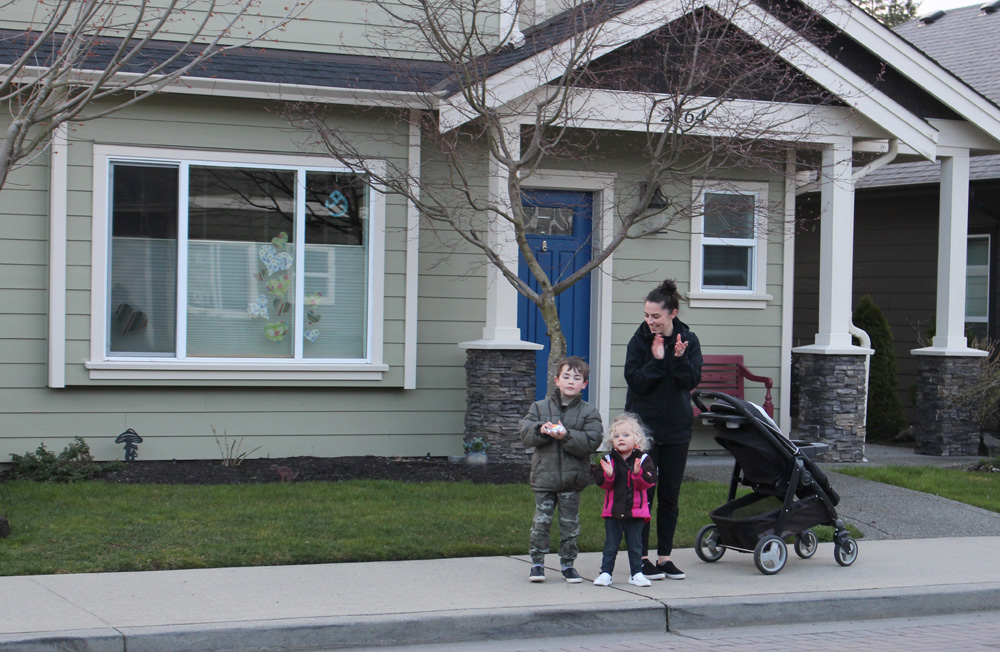
Still very much in pandemic-mode:
Let’s not forget, that we are in BC — as Dr Henry said during her media briefing on April 18 — still in the eye of the storm.
It seems relatively calm here, with most people comfortably tucked away in their homes, fretting over technological glitches and missed social opportunities compared to the broader world who are in fear of affording health care without health insurance (most notably in the USA on this side of the world), or being shipped off to hospital without the support of family (in most any country), or being caught up in a wave of uncontrollable bodies at hospitals or even morgues (we see such horrors in news coverage out of Italy, Spain, and New York City).
Seniors in society and health care:
In BC and Canada many of us will still need to grapple with the culturally-acceptable placement of loved ones in long term care homes. If that was ever the right decision, is it still now? The COVID-19 outbreak disaster of the long-term care home facilities in BC and across Canada is an ethical eyesore, a social failure, and a human tragedy. The gaping hole of neglect that now blasts out heat and anger at our so-called compassionate society will be one of the largest, deepest and most painful explorations for our society and governments post-COVID.
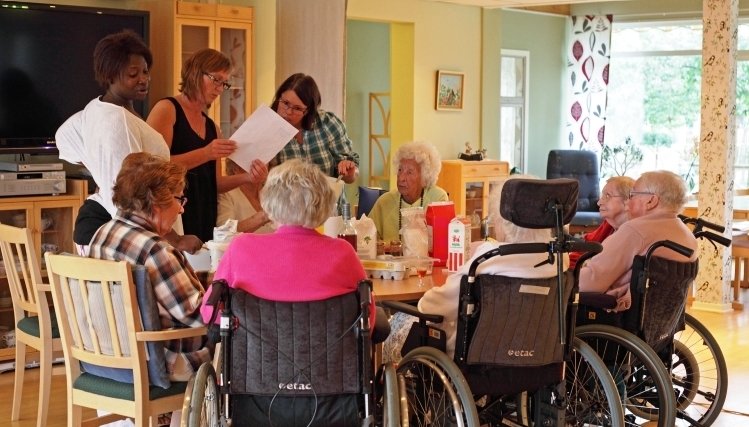
Responses are already in place (such as paying care workers more, and restricting them to working in one location only as a way to prevent spread — something led by BC, by the way) but this comes far too late for many families who have lost a loved one to the jaws of COVID-19 in those facilities.
We are looking into the cold eyes of capitalism that has benefited in particular one distinct business sector (the long-term/assisted living care facility owners) who have profited by keeping wages low and part-time without benefits, and in many cases keeping the service to care-home residents to a minimum. In any business, pinching back on the use of supplies is a way to cut costs; during a pandemic the cost is counted in lost lives and the lives of infected workers and their families.
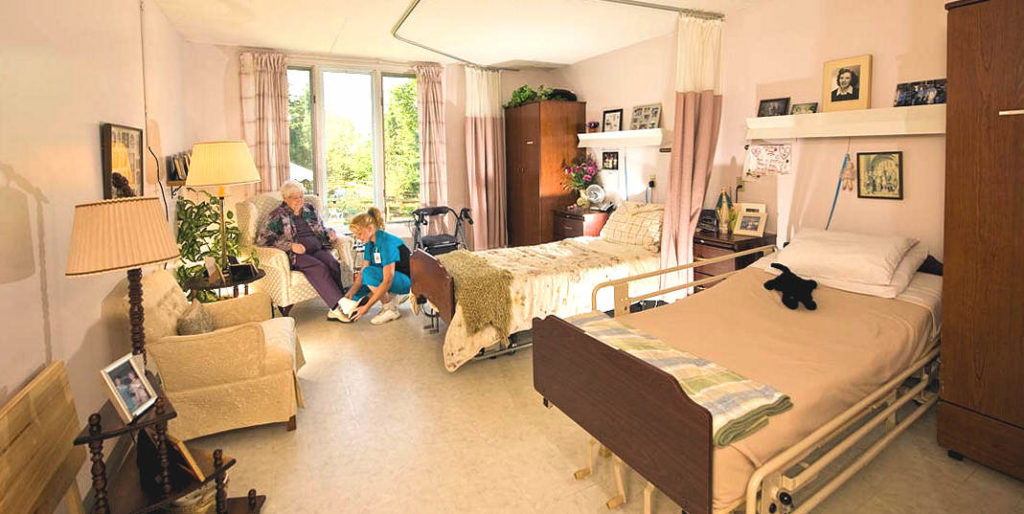
Why do we ‘place’ our elderly loved ones in ‘homes’ which are really just like sardine cans filled with pension-enabled or family-wealth-enabled seniors who for the most part are the commodity of an industry that has profited off of active adults not wanting to bother with less-mobile or ailing seniors? Visiting a loved-one in a care home sounds lovely, but it’s like those who go to church on Sunday just to say or know that they did. It doesn’t change what they believe or do, or what they return to.
Supporting elders in more socially conscious and more psychologically kind environments as they age will in fact produce the epidemiological safety zone that we would have hoped for during this COVID-19 pandemic. No doubt, the financial and social costs to care for elderly people (especially if ailing) is hard for most families. And most seniors — if they are physically or financially able — would probably prefer to live independently. But underlying any shifts in those realities would be the need for a guaranteed livable income, a better pension structure, and/or governments (with the buy-in of social will) to pay for the cost to maintain seniors through possibly many decades of various levels of support.
Musing about who is at the helm:
We can only dream of the amount of money it would take to fund such a sociopolitical shift in the health care system. But, having said that, could any of us have imagined what seems like ‘money out of air’ that we’ve seen rolled out by the billions in just the last six to eight weeks by the federal and provincial governments in Canada?
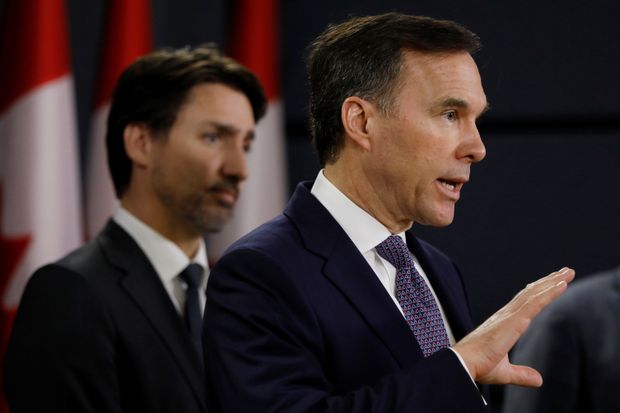
One quick thing picked up briefly in the torrent of information swirling out there during COVID-19 was a comment from Finance Minister Bill Morneau who apparently said to Trudeau that it would take using up Canada’s ‘rainy day fund’ to deal with the many financial bandaids required for individuals and business during the initial brunt of COVID-19 on our populations. And apparently Prime Minister Justin Trudeau’s reply, softly, was, effectively: “this is our rainy day”.
Even if you hold the bias that elderly folks should be ‘parked elsewhere’ while the rest of us get on with our busy active lives, look at who else has suffered and paid the price for taking care of our sequestered elders: the care workers in long-term and assisted living facilities who — as it happens — are mostly women, and mostly in the 20 to 40-year-old age group, who themselves are raising families and now in reasonable danger of passing on the danger of infection to people around them at home and in their communities.
The BC CDC data reveals this glaring horror. Most of the deaths in BC are among seniors (median age of death 86, as of April 14) and most of the infections (from which people generally do recover) are among a wide range of adult ages (median age 54). The majority of the infections among adults age 20 to 40 are among women (given that women are represented more strongly among health care workers).
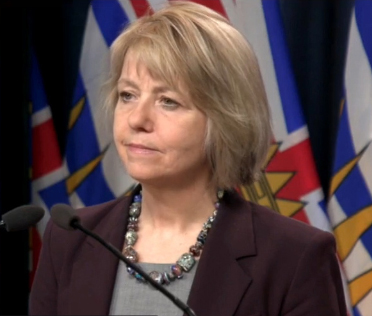
Those infection and death stats were part of Dr Henry’s presentation on Friday April 17 — her second roll out of ‘data modelling’ about COVID-19. While she says that models are just that — not predictions — governments are making decisions based on those models nonetheless, affecting all of us.
It’s admirably transparent for Health Minister Dix and Dr Henry to share the detailed COVID-19 statistical data with British Columbians through a now much-worked media through joint daily briefings. In a democratic society it’s also the best way to raise red flags in gentle but powerful ways. The continuing listing of care-homes with COVID-19 outbreaks is an open door to examination by the public and government later on.

It bears repeating — that it matters who you vote for (and who wins) in general elections. Who we choose at the ballot box end up in positions where they make life-impact decisions on us all.
A society never knows when it will need its best leaders in the top jobs. In BC we lucked out with Premier John Horgan who takes a philosophical view of ‘people first’ combined with practical application of the power of legislation and the law. You can almost feel the relief of some opposition MLAs that they didn’t, per chance, get stuck with the grim task of leading BC through a generation-changing and budget-destroying pandemic.
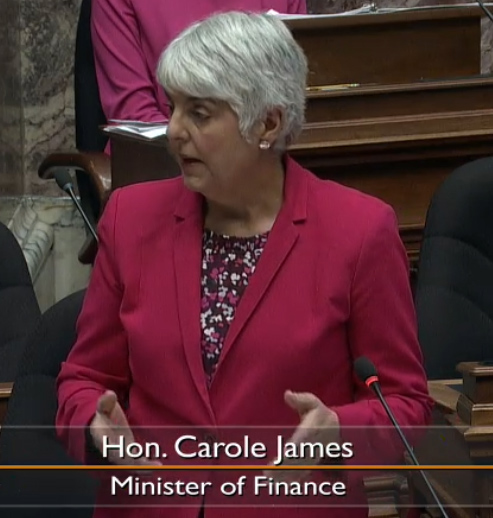
In BC Finance Minister Carole James we have a pragmatic, turn-on-a-dime budget manager who has yet still been able to guide her government with choices in putting people first as the money bleeds out the door during COVID-19.
It is most poignant that only a few weeks ago Minister James announced her own health issues (a diagnosis of Parkinson’s Disease) by which she delivered the news that she would not be running again in the next provincial election in 2021. And yet she leads the province’s pocketbook with aplomb during the uncharted waters of a global pandemic that has washed up on BC shores.

And we’ve done well as a province with Adrian Dix as Health Minister in BC; he clearly has a genuine desire to get it right in all aspects of the very complex health care system.
Dix will no doubt be strong at the helm through the rest of this pandemic management and recovery phase, with both he and the Provincial Health Officer backed up on the enforcement side by the no-nonsense sensibilities of Public Safety Minister and Solicitor General Mike Farnworth.
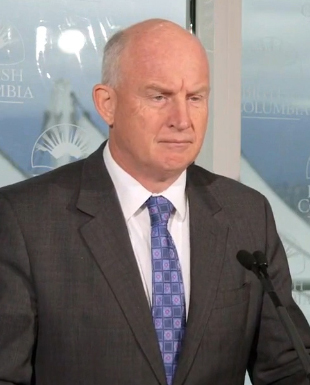
Minister Farnworth today on a sunny Sunday reminded British Columbians in a morning press conference that anyone who doesn’t think the rules apply to them should think twice. Farnworth was referring to of course following the Provincial Health Officer’s orders on all matters, but also a fine of $2,000 announced today for anyone engaging in price gouging or the secondary reselling of critical medical supplies in the community or online. He called it shameful, the practice of taking advantage of vulnerable people at a dangerous time.
Farnworth’s announcement today included a list of who is now authorized by government to flag violations and issue fines — including municipal bylaw officers, liquor and cannabis inspectors, gaming and conservation officers, park rangers, sheriffs and others — showing the scope and intensity of the pandemic-related issues at hand.
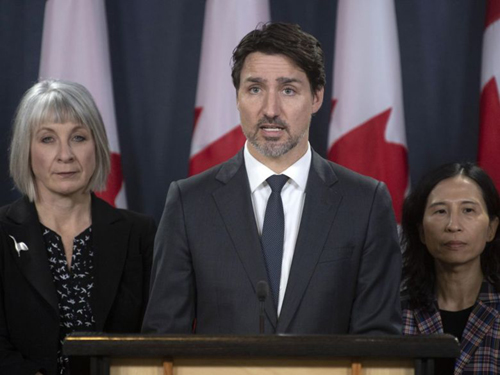
At the federal level we lucked out with Prime Minister Justin Trudeau at the top who puts the softer still glamorous touch on a tough situation; afterall, even in a pandemic we want celebrity-style political leadership. And it was under his leadership that the highly effective, almost funky Dr Theresa Tam was appointed as the Chief Health Officer for Canada in 2017.
And federally we lucked out with Health Minister Patty Hajdu (who probably wouldn’t be in that portfolio had it not been for the kerfuffle of the SNC-Lavalin incident by which former Health Minister Dr. Jane Philpott lost her position in cabinet and then her seat in the following election — remember that from way back in early to mid 2019 — also with the downfall of Canada’s first indigenous justice minister Jody Wilson-Raybould as a footnote?). Hajdu can simply only be described as appropriately unflappable — she of her own mind can being counted on to deliver the raw truth while still playing on the same team.
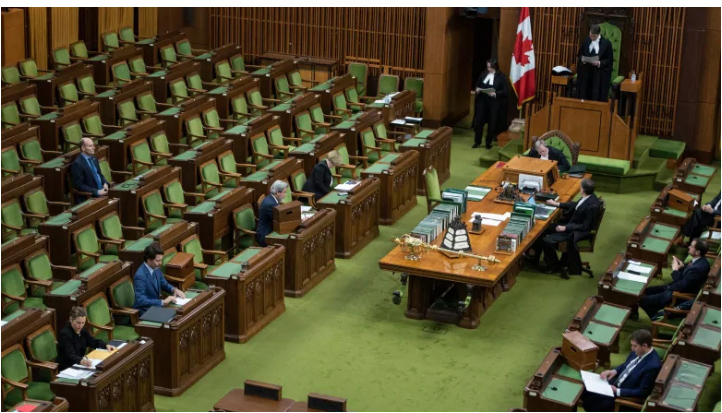
Hopefully, as well, history will show the proof of the old political adage that “the voters are always right” in the outcome of the October 2019 federal election that produced a minority government for the Liberals but with a robust active underpinning of as many as three (effectively four) opposition parties.
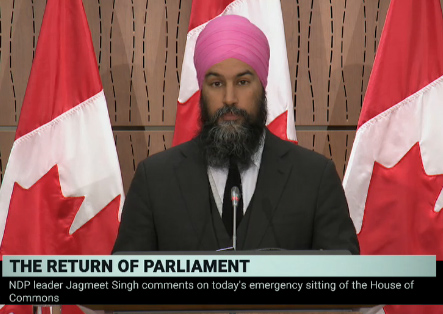
Due to the present makeup of the federal government, the Conservatives (still under their leader Andrew Scheer) have had a powerful arm to push for attention to business and the NDP (under the leadership banner of Jagmeet Singh) have been well placed to see that all Canadians are recognized and served in the financial benefit packages that are being rolled out quickly.
Even the Bloc Quebecois have brought a tone of conscientiousness to debate in the House of Commons and the Green Party (even with only three seats) has been given a voice for their push now on guaranteed livable income in addition to the climate change theme which seemed to have finally made it into the mainstream (e.g. Trudeau announcing a $1.7 billion program this week for the cleanup of orphan oil wells in Alberta, Saskatchewan and BC, to help with the economic recovery of that industry that was suffering even before COVID-19 hit).
Transition to the better care of seniors:
BC Health daily advisories diligently list the names of the long-term care homes where 24 COVID-19 outbreaks have occurred and are still occurring (20 at last count). All of the affected facilities are in the Lower Mainland area in higher-density areas of the Vancouver Coastal Health and Fraser Health authorities.
Dr Henry is quick to emphasize that COVID-19 has left no health region untouched. But the factors of population density and public health belong hand-in-glove. Lower-density areas of population will naturally see lower incidences of infectious spread, except in the case of particular outbreaks. BC’s public health team has worked hard to identify ‘sparks’ (outbreaks) and to extinguish them (through rigorous tracking and polite but vigorous containment) as much as possible.
It should not be lost on any of us that the other type of institution where COVID-19 infection spreads rapidly and effectively is the correctional facility setting. People contained in spaces…. the same as the long-term care homes for our seniors. While not a blanket statement for all situations (care homes are no doubt the only reasonable or possible place for the care of some elders and others with permanent health challenges), there is the consideration of one’s karma (or at the very least the unfairness of one’s social and/or financial situation in a lopsided society economy) for choosing to ‘place’ a loved one in a care home.
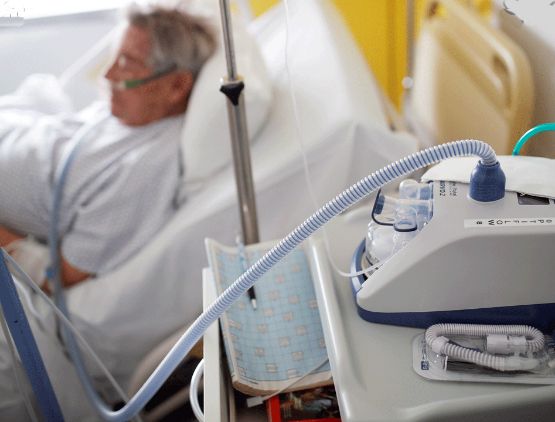
A good number of seniors who’ve contracted COVID-19 in long-term care homes and who’ve been offered relocation to hospital for intensive care have apparently declined acute-care intervention in hospital, Dr Henry has said. This shows how quality of life (even at the end of life) and the possibility of being with loved ones at the time of one’s death (even by way of video or a phone call) matters more than being supported with artificially-supplied oxygen. As we reach the end, we realize it’s the human bonds we’ve formed along the way that matter more than a few more breaths of air.
Being packed into facilities where physical distancing is virtually impossible (despite ‘protocols’ which are likely usually applied after that fact of an outbreak) was an infectious disaster waiting to happen in virtually all care-homes for seniors across Canada.
Viral transmission, immunity and vaccines:
People are social beings. That might seem like an obvious statement but COVID-19 reminds us of that in a culture where socioeconomic lanes have distanced people more and more over the last 30 years.
Which brings us to the beginning and the end of this loop… a virus that gains traction because its human hosts provide proximity for the one-metre jump (we stay two meters apart in order to try and prevent the jump), and how in the end we may choose social bonding over the ultimate physical demise.
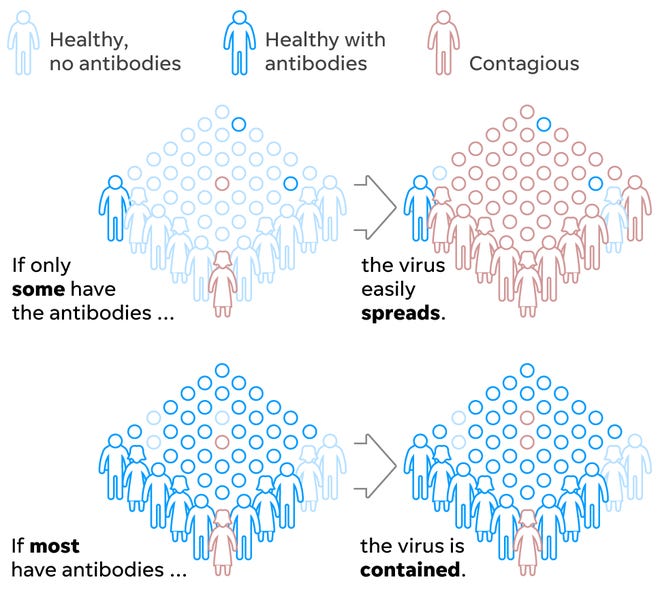
The powerful conquering of hope over despair is evident everywhere however. Short of the few who might already be predisposed to taking undue risk (or who already have a mental or social disorder that suppresses their natural instinct to survive), we are all naturally assuming there will be a ‘new tomorrow’. Otherwise we would not be socially isolating and physically distancing to the extent that we are, which is an act of good faith that we will get through this to the other side.
Most of us can probably now dispense with using the terminology of ‘new normal’. What was ‘normal’ prior to COVID-19 (effectively to the end of 2019), was in fact dependent upon community-immunity (aka, ‘herd’ immunity) which is a modern construct based on the masterful works of science.
Prior to the mid-1950s there was still the occurrence of crippling disease from infections like polio and whooping cough, and death from scarlet fever. Smallpox used to wipe out entire clusters of people (30% of those infected would die) until the vaccine for that became a human victory over the viral world; even still, the last few seen cases of naturally-occurring smallpox occurred not so long ago in the mid 1970s in Bangladesh and Somalia; and the final-recorded death was that of a British medical photographer who contracted the disease in 1978 at a lab where she was working.
Working towards ‘the new tomorrow’:
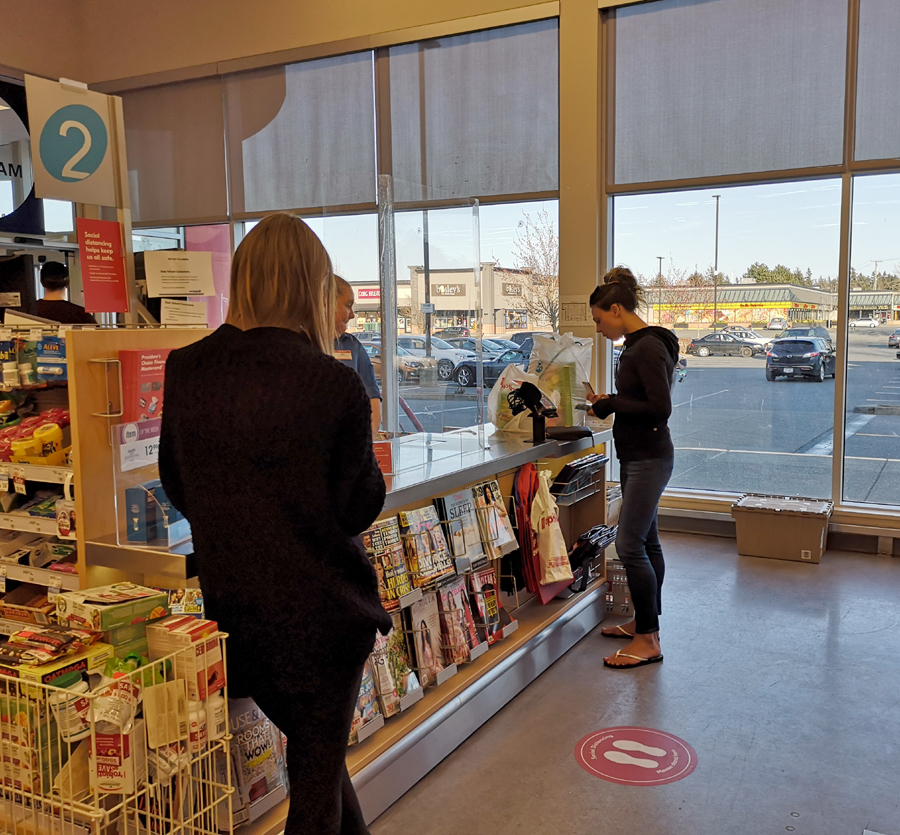
The ‘new tomorrow’ is a more cautious world, where people for decades will have experienced and will remember the relative degrees of agony of living through COVID-19.
Just as our entire culture, society and economy were indelibly impacted by people living through the Great Depression and World War II (with echoes of that in living through the Great Recession of 2008-2017 crash and recovery, and with soldiers off to various wars in the Middle East in that past two decades), so too will we pass on our hesitancy, fears and trauma responses to our experiences of COVID-19.
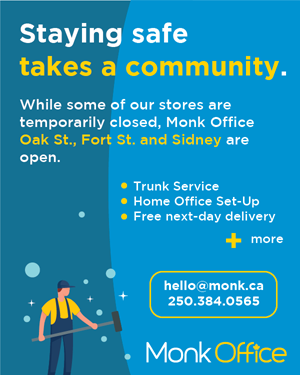
The only ‘normal’ going forward will be the impact of COVID-19 on each of us and on our families, relationships, finances, economy and society. Many of us will still return to or establish stable go-forward lives.
We will remember to wash our hands regularly, and we will probably still exercise a level of physical distancing where appropriate. But there will be scars in our bank accounts, or family dynamics and what we thought of as our typical community events and activities. Few people will go back to everything as it was before 2020.
Ironically, our hindsight will be ’20/20′ about the year 2020…the year where everything changed for those who are alive today. Some parents in the future may even call their yet-to-be-born children Covid or Covida (Vida for short), if they have happy romantic memories of this time. But for most of us the searing impact of COVID-19 experiences will be borne deeply.
The economic and social positive outcomes from COVID-19 are many, which will be explored in future editorials. In rapidly learning about and adapting to huge holes in the social safety net for many Canadians, and seeing how any deficits in funding for health-care, scientific research and emergency preparedness funding may have set us behind where we could have been in a pandemic, have been lessons fast learned. With any luck, resources will be applied more insightfully in those budget line items by future governments.
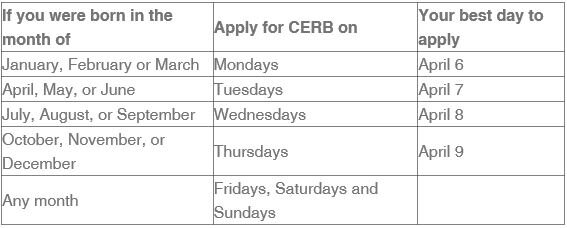
The emotional-social support networks of society will be improved upon likely as well — even just last week it was announced that an army of degree-bearing counsellors were hired by the BC government to provide supports to post-secondary students (already a group that was vulnerable to mental and emotional upsets due to the many changes of young adult life that come in a socioeconomic world that was skewed to the have’s vs the have-not’s).
Let’s now remember that as of today April 19 there are 2,241,359 confirmed cases of COVID-19 globally (81,153 of those being new cases in just the last 24 hours) and that so far 152,551 people have died from this new viral disease (6,463 of those in the last 24 hours). BC stats at April 18: 1,647 cases (29 of those new from the previous 24 hours) and 81 deaths (three new in 24 hours, all associated with long-term care homes).
The raging fire of COVID-19 is on. If any of us have even had a fleeting thought to ease up on our social-isolation and physical distancing, well, hey, let’s not.
~ MPB
[Update Sept 2020] ==== About the writer: Mary P Brooke, B.Sc. has been the editor and publisher of West Shore Voice News since 2014 (which became Island Social Trends in August 2020). Her editorials commonly take a socioeconomic slant on things, with a broader-world view.

=== We encourage you to support all of our advertisers during COVID-19 and beyond. Advertisers and subscribers are enabling West Shore Voice News to continue producing quality journalism during this important historic time.
How to advertise: Call 250-217-5821 or inquire to advertising@westshorevoicenews.com
How to subscribe to our digital enews (presently issued daily): Call 250-217-5821 or inquire to subscriptions@westshorevoicenews.com | Subscription details online.




